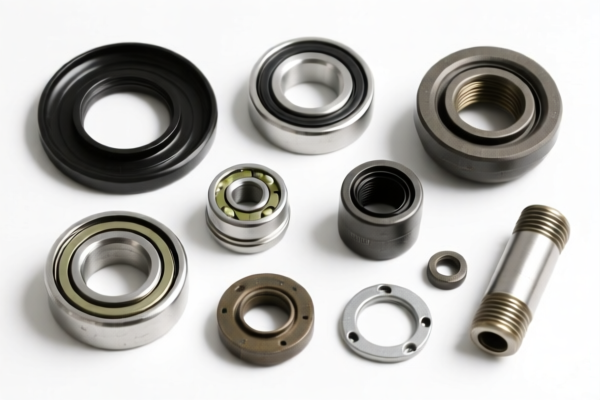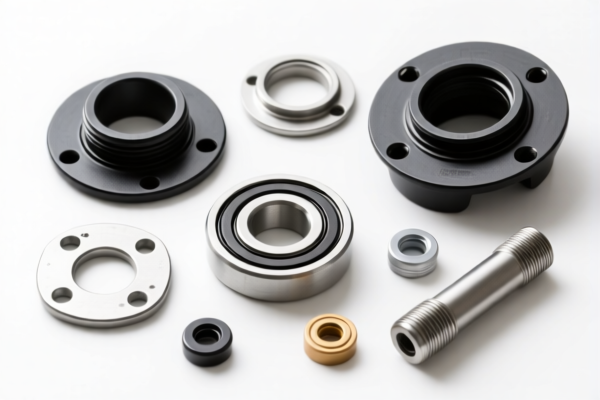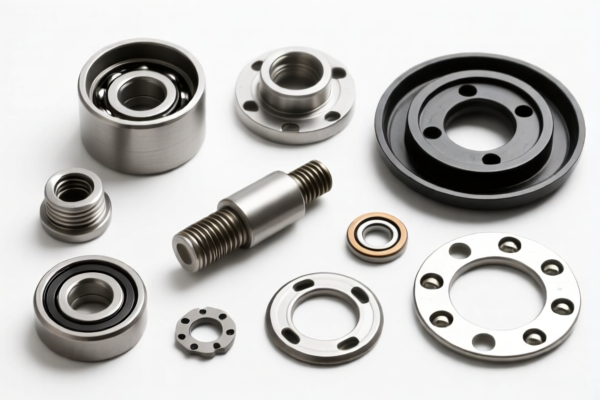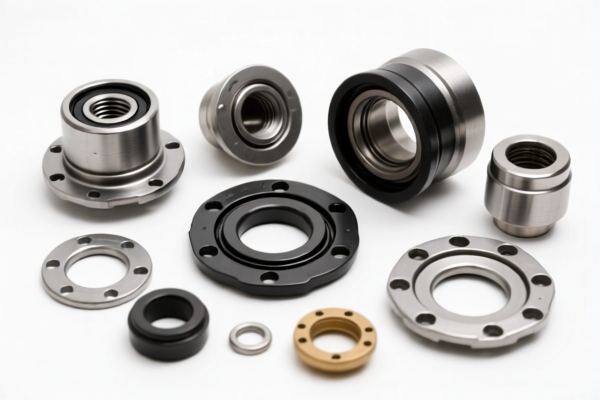| HS Code | Official Doc | Tariff Rate | Origin | Destination | Effective Date |
|---|---|---|---|---|---|
| 8409915081 | Doc | 57.5% | CN | US | 2025-05-12 |
| 8409919910 | Doc | 57.5% | CN | US | 2025-05-12 |
| 8487100040 | Doc | 55.0% | CN | US | 2025-05-12 |
| 8487900080 | Doc | 83.9% | CN | US | 2025-05-12 |
| 8503009520 | Doc | 83.0% | CN | US | 2025-05-12 |
| 8503009550 | Doc | 58.0% | CN | US | 2025-05-12 |
| 8548000000 | Doc | 55.0% | CN | US | 2025-05-12 |
| 7308100000 | Doc | 80.0% | CN | US | 2025-05-12 |
| 7308903000 | Doc | 80.0% | CN | US | 2025-05-12 |
| 7326908688 | Doc | 82.9% | CN | US | 2025-05-12 |
| 7326908605 | Doc | 82.9% | CN | US | 2025-05-12 |
| 8708990300 | Doc | 55.0% | CN | US | 2025-05-12 |
| 8708991600 | Doc | 55.0% | CN | US | 2025-05-12 |
| 8714998000 | Doc | 47.5% | CN | US | 2025-05-12 |
| 8714995000 | Doc | 37.5% | CN | US | 2025-05-12 |




Parts
The term "parts" is exceptionally broad, referring to any component of a larger whole. Understanding "parts" requires categorizing them by the systems they belong to and their function within those systems. This entry will cover common interpretations and associated information.
General Characteristics
Parts are typically modular, designed for assembly into a more complex mechanism or structure. They are characterized by:
- Function: The specific role the part plays within the system.
- Material: The substance(s) from which the part is constructed.
- Compatibility: The ability of the part to interface correctly with other parts in the system.
- Standardization: Many parts are manufactured to industry standards to ensure interchangeability.
- Interdependence: Parts rarely function in isolation; they rely on other parts for operation.
Categorization by System
The following outlines common categories of "parts" based on the systems they are used in:
1. Mechanical Parts
These are components used in machines, engines, and structures to transmit force, motion, or energy.
- Materials: Steel, aluminum, brass, plastic, composites.
- Examples: Gears, bearings, shafts, fasteners (bolts, screws, nuts), springs, levers, pulleys, cams, linkages, housings, frames.
- Usage Scenarios: Automobiles, aircraft, industrial machinery, robotics, bicycles, simple tools.
- Common Types:
- Fasteners: Used for joining parts. Categorized by head type (e.g., pan, flat, round), drive type (e.g., Phillips, slotted, hex), and material.
- Bearings: Reduce friction between moving parts. Types include ball bearings, roller bearings, sleeve bearings.
- Gears: Transmit rotational motion and torque. Types include spur gears, helical gears, bevel gears, worm gears.
2. Electrical/Electronic Parts
These components control or manipulate electrical current or signals.
- Materials: Silicon, copper, gold, plastic, ceramic, various metals.
- Examples: Resistors, capacitors, inductors, transistors, diodes, integrated circuits (ICs), connectors, switches, wires, transformers, sensors.
- Usage Scenarios: Computers, smartphones, televisions, power supplies, communication systems, control systems.
- Common Types:
- Resistors: Oppose the flow of current. Categorized by resistance value (ohms), power rating (watts), and tolerance.
- Capacitors: Store electrical energy. Categorized by capacitance (farads), voltage rating, and dielectric material.
- Transistors: Amplify or switch electronic signals. Types include bipolar junction transistors (BJTs) and field-effect transistors (FETs).
3. Automotive Parts
Specifically designed for vehicles. Often overlaps with mechanical and electrical categories.
- Materials: Steel, aluminum, plastic, rubber, glass, composites.
- Examples: Engines, transmissions, brakes, suspensions, steering components, tires, lights, batteries, sensors, electronic control units (ECUs).
- Usage Scenarios: Passenger vehicles, trucks, motorcycles, buses.
4. Computer Parts
Components that make up a computer system.
- Materials: Silicon, copper, aluminum, plastic, various metals.
- Examples: Central Processing Unit (CPU), Graphics Processing Unit (GPU), Random Access Memory (RAM), Storage Devices (Hard Disk Drives, Solid State Drives), Motherboard, Power Supply Unit (PSU), Case, Cooling Systems.
5. Structural Parts
Components used in building construction and infrastructure.
- Materials: Steel, concrete, wood, brick, glass, composites.
- Examples: Beams, columns, foundations, walls, roofs, floors, windows, doors.
Considerations
- OEM vs. Aftermarket: Original Equipment Manufacturer (OEM) parts are those produced by the original manufacturer of a system. Aftermarket parts are produced by other companies, often as replacements or upgrades.
- Quality & Reliability: Part quality significantly impacts the performance and longevity of the overall system.
- Standards Organizations: Organizations like ISO, ANSI, and DIN establish standards for part dimensions, materials, and performance.
Based on the provided information, the following HS codes are relevant to “parts”:
- 8409915081: Parts suitable for use solely or principally with the engines of heading 8407 or 8408. Specifically, these are other parts suitable for use solely or principally with spark-ignition internal combustion piston engines (including rotary engines), to be installed in vehicles of subheading 8701.21, 8701.22, 8701.23, 8701.24 or 8701.29, or heading 8702, 8703 or 8704, and are steel forgings. The total tax rate is 57.5%, comprising a basic tariff of 2.5%, an additional tariff of 25.0%, and a further additional tariff of 30.0% effective after April 2, 2025.
- 8409919910: Parts suitable for use solely or principally with the engines of heading 8407 or 8408. Specifically, these are other parts suitable for use solely or principally with spark-ignition internal combustion piston engines (including rotary engines), and are connecting rods. The total tax rate is 57.5%, comprising a basic tariff of 2.5%, an additional tariff of 25.0%, and a further additional tariff of 30.0% effective after April 2, 2025.
- 8503009520: Parts suitable for use solely or principally with the machines of heading 8501 or 8502. Specifically, these are other parts of motors. The total tax rate is 83.0%, comprising a basic tariff of 3.0%, an additional tariff of 25.0%, and a further additional tariff of 30.0%, with an additional tariff of 25% for steel products.
- 8503009550: Parts suitable for use solely or principally with the machines of heading 8501 or 8502. Specifically, these are other parts of generators. The total tax rate is 58.0%, comprising a basic tariff of 3.0%, and an additional tariff of 25.0%, and a further additional tariff of 30.0%.
- 8708990300: Parts and accessories of the motor vehicles of headings 8701 to 8705. Specifically, these are other parts and accessories, and are parts of tractors suitable for agricultural use, containing rubber. The total tax rate is 55.0%, comprising a basic tariff of 0.0%, and an additional tariff of 25.0%, and a further additional tariff of 30.0%.
- 8708991600: Parts and accessories of the motor vehicles of headings 8701 to 8705. Specifically, these are other parts and accessories, and are parts of tractors suitable for agricultural use, and are other parts for power trains. The total tax rate is 55.0%, comprising a basic tariff of 0.0%, and an additional tariff of 25.0%, and a further additional tariff of 30.0%.
- 7326908688: Other articles of iron or steel. Specifically, these are other articles, and are other articles. The total tax rate is 82.9%, comprising a basic tariff of 2.9%, an additional tariff of 25.0%, and a further additional tariff of 30.0%, with an additional tariff of 25% for steel products.
- 7326908605: Other articles of iron or steel. Specifically, these are other articles, and are other articles, and are rods for electrical grounding. The total tax rate is 82.9%, comprising a basic tariff of 2.9%, an additional tariff of 25.0%, and a further additional tariff of 30.0%, with an additional tariff of 25% for steel products.
Regarding HS codes 8503009520, 8503009550, 7326908688 and 7326908605, please note the additional tariff of 25% applicable to steel products.
Customer Reviews
No reviews yet.